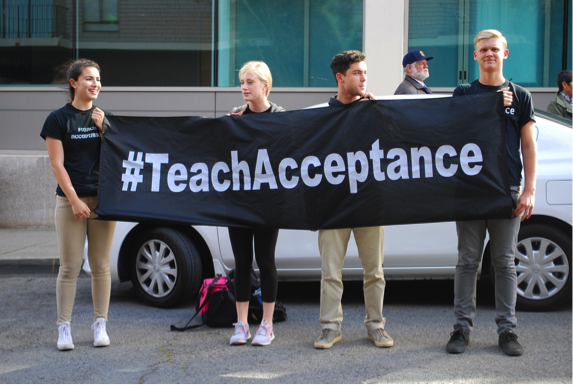
I’m going to tell you a story. It’s a story about a boy. The name doesn’t matter. The place doesn’t matter. The time doesn’t matter. The age of the boy doesn’t matter. Nothing matters, except for what happens and what we learn from the events in the story, and the discourse that follows.
Have you ever had a secret? What about a secret that had the power to alter how you lived your life? What happens when the secret starts to eat away at you, scaring you, until one day, you break? There is a boy. He sits alone at a barren desk, in a barren room. He has nothing to do, nowhere to be; he is alone. But he isn’t alone. His thoughts race through his mind, uncontrolled; a runaway train whose only chance of stopping in to be destroyed or to somehow be stopped by a second party. His secret jumps on the train. The boy grabs his phone. He types a long winded message. He posts it to his social media. He is free.
But this feeling of being free lasts a minute; then he is locked in a different set of shackles. This time, they are tighter, providing less freedom, and more abuse. People begin to respond to the boy’s post. They give messages of hope, pride, courage, acceptance, and love. Some keep in the dark. Those who used to be friends, turning a cold shoulder, avoiding the boy, or stabbing him with words of hate. Yes, the boy has some who support his life, but hate seems always to prevail. The boy takes the hatred to heart. He believes what some politicians say. He believes what some religions preach. He believes friend or family member when they call him a “faggot.” He gives up, gives in to his torturer, and that boy, a boy who seemed to be happier with a secret killing him internally, makes a decision.
We all have a secret, though they change from person to person. Theses secrets are small in comparison to the secret that the boy in the story had to keep. If you hadn’t figured out by now that the boy was LGBTQIA+, I have some news for you; the boy is LGBTQIA+. It doesn’t matter what branch he belongs to, we all face the same issues. I say we because I too belong to the LGBTQIA+ community. The only difference is, I got lucky.
Growing up in suburban New York, I faced a similar story to the boy. In fact, I based the story of the boy off of my coming out story. I experienced the love and the pride associated with becoming public with my sexuality, but I also experienced the hate and the misunderstanding. I lost close friends who failed to see the possibility that I was gay. I lost friends who thought that if I kept dating women, I would change. I had people throw hateful words at me, trying to break me like stones through glass. Till this point in time, I have been conservative with what happened after I came out, but after close consideration, I realized things need to change.
I chose to end the story of the boy the way I did to show how the stats provided could line up with a normal, everyday, adolescent. I’ve also stated that the story was based on my personal story. While I did not carry out suicide, the thoughts did poison my mind for a time after coming out. Yet, I’m still here. Not only am I still here, but I am happy. I have a loving partner who also advocates for the continued advancement of LGBTQIA+ rights. I have decided to devote my life to working with LGBTQIA+ adolescents by studying social work at an institution which strives to promote an inclusive environment for all. I hope that in doing so, with the help of the community as a whole, we can lower the staggering numbers. By facilitating conversations, hosting inclusive environments, and educating individuals on the importance of inclusion and diversity, we can work to support each other, and help those who need it. We can move on from these frivolous arguments about love and move on to greater societal issues, such as the staggering amount of homeless in our cities, and the amount of those who don’t have access to basic human needs. We are not different, and once this hurdle is jumped, we can stand together to change our nation for the better.
[1] "LGBT Youth." Centers for Disease Control and Prevention. Centers for Disease Control and Prevention, 12 Nov. 2014. Web. 24 Jan. 2017.
[2] "Facts About Suicide." Facts About Suicide. Trevor Project, n.d. Web. 24 Jan. 2017.